
The art of mural painting has a long history, with its roots in ancient civilizations. One of the most captivating and spiritually significant forms of mural art is the depiction of Radha and Krishna, the eternal lovers and divine figures in Hindu mythology. Radha Krishna mural art is not just a visual spectacle but also a powerful symbol of devotion and spiritual love.
Radha and Krishna are believed to be the ultimate embodiment of love, harmony, and divine union. Their love story is filled with numerous tales of unconditional love, yearning, separation, and reunion. Artists have been inspired by their divine love and have beautifully captured their emotions, expressions, and gestures in mural art.
Radha Krishna mural art can be found in temples, homes, and public spaces, serving as a focal point for devotees and art enthusiasts. The art form not only showcases the artistic skills of the creator but also provokes a sense of awe, tranquility, and reverence in the viewers.
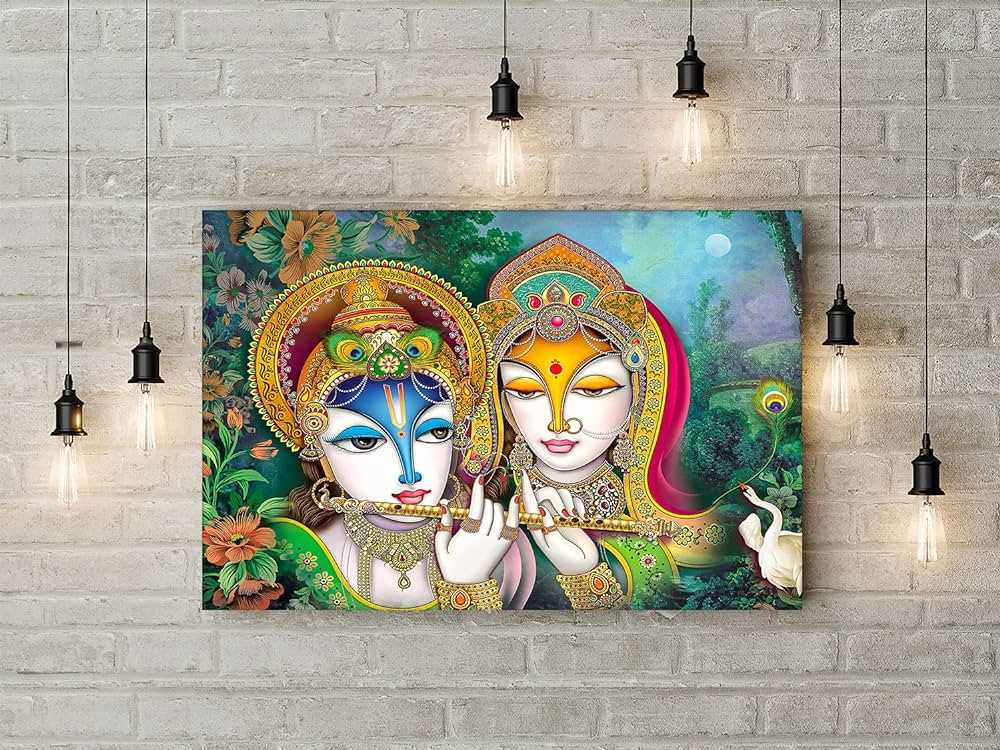
Murals served a variety of purposes throughout history. In ancient times, they were often used to depict religious or mythological scenes and played a significant role in conveying cultural and moral messages. They also served as a means of documenting historical events and commemorating important figures.
During the Renaissance period, mural art experienced a resurgence in popularity. Artists such as Michelangelo and Leonardo da Vinci used murals to adorn the walls and ceilings of churches, palaces, and other important buildings. These elaborate and detailed works of art showcased the skill and creativity of these renowned artists.
In more recent times, mural art has evolved to represent a form of social commentary and activism. Street art, which often takes the form of murals, has become a powerful tool for artists to express their views on various social and political issues. These murals can be found in urban areas around the world, transforming public spaces into galleries of thought-provoking and impactful art.
One of the key significances of mural art is its ability to create a sense of community and connection. Murals often depict local culture, history, and traditions, allowing people to feel a sense of pride and belonging to their community. They also have the power to beautify public spaces, making them more vibrant and engaging for residents and visitors alike.
In the context of Radha Krishna mural art, these paintings serve as a symbol of devotion and spiritual love. They depict the divine love and union between Radha and Krishna, which is a central theme in Hinduism. These murals not only enhance the spiritual atmosphere of temples and shrines but also evoke a sense of awe and reverence in devotees.
Exploring the Essence of Devotion in Art
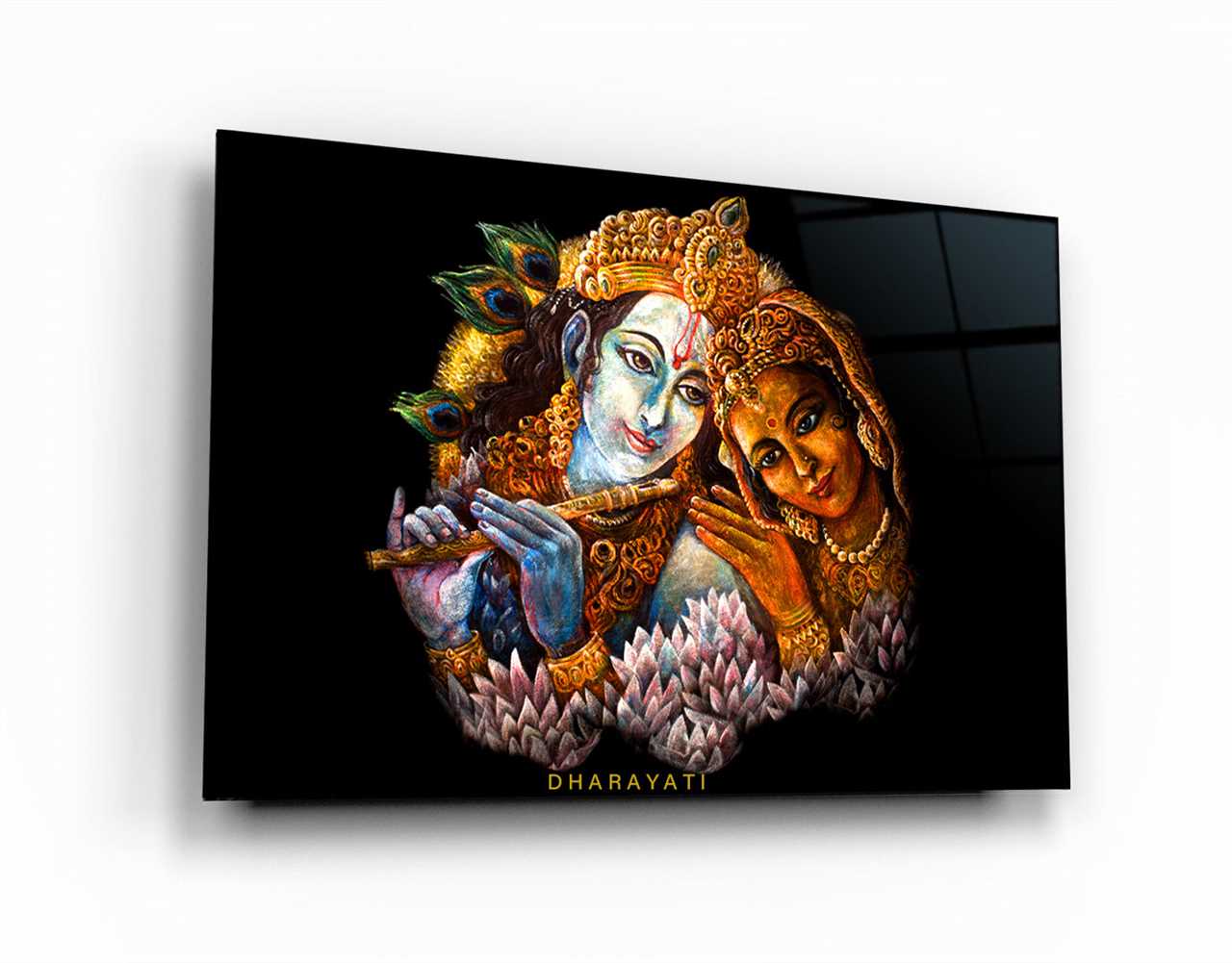
Devotion is a fundamental element of religious and spiritual practices. It represents a deep and sincere commitment to a higher power, often expressed through rituals, prayers, and acts of love and kindness. In the context of art, devotion takes on a unique form, allowing artists to express their love and reverence for the divine.
Radha Krishna Mural Art is one such form of artistic expression that beautifully captures the essence of devotion. Through intricate and vibrant paintings, this art form showcases the eternal love between Radha and Krishna, two divine figures in Hindu mythology. Each stroke of the brush depicts their unconditional devotion and spiritual connection.
Visual Representation of Love and Devotion
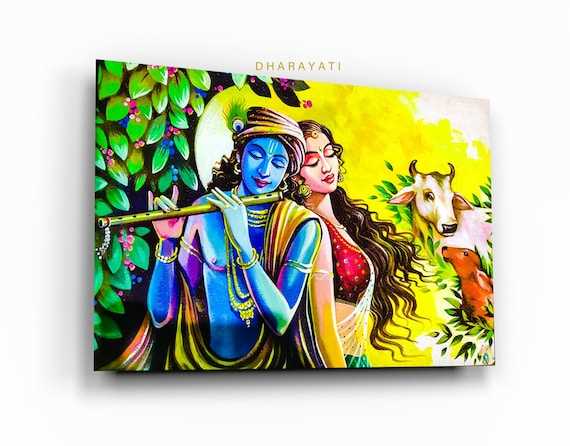
The Radha Krishna Mural Art brings to life the stories and legends surrounding the divine couple. It portrays their playful and intimate moments, their encounters with mythological creatures, and their everlasting bond. The vibrant colors and striking details depict the intensity of their love and the depth of their devotion.
These paintings often showcase Radha and Krishna in various moods and emotions, symbolizing the different facets of devotion. Whether it is Radha’s yearning for Krishna or Krishna’s mesmerizing flute playing, every element in the artwork signifies the devotion and spirituality that inspires and uplifts the viewer.
Transcending Language and Culture
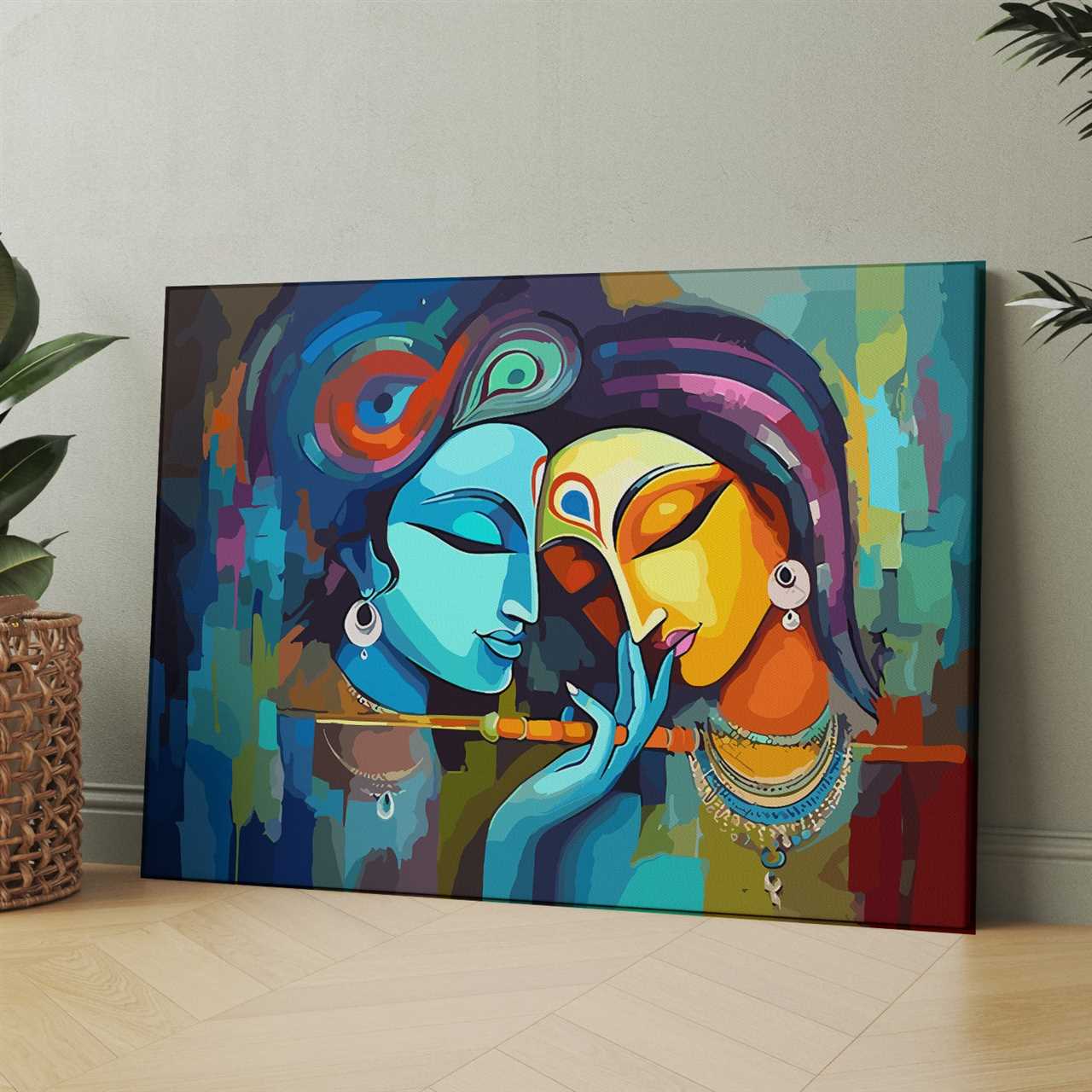
One of the most remarkable aspects of Radha Krishna Mural Art is its ability to transcend language and cultural barriers. Regardless of one’s religious or cultural background, these paintings evoke a sense of awe and admiration. The universal language of devotion and love resonates with individuals from all walks of life, creating a bridge between different communities and fostering a sense of unity.
Through this art form, people can connect with the divine and nurture their own spirituality. It serves as a reminder of the power of devotion and the transformative impact it can have on one’s life.
The Spirituality Expressed through Radha Krishna Murals
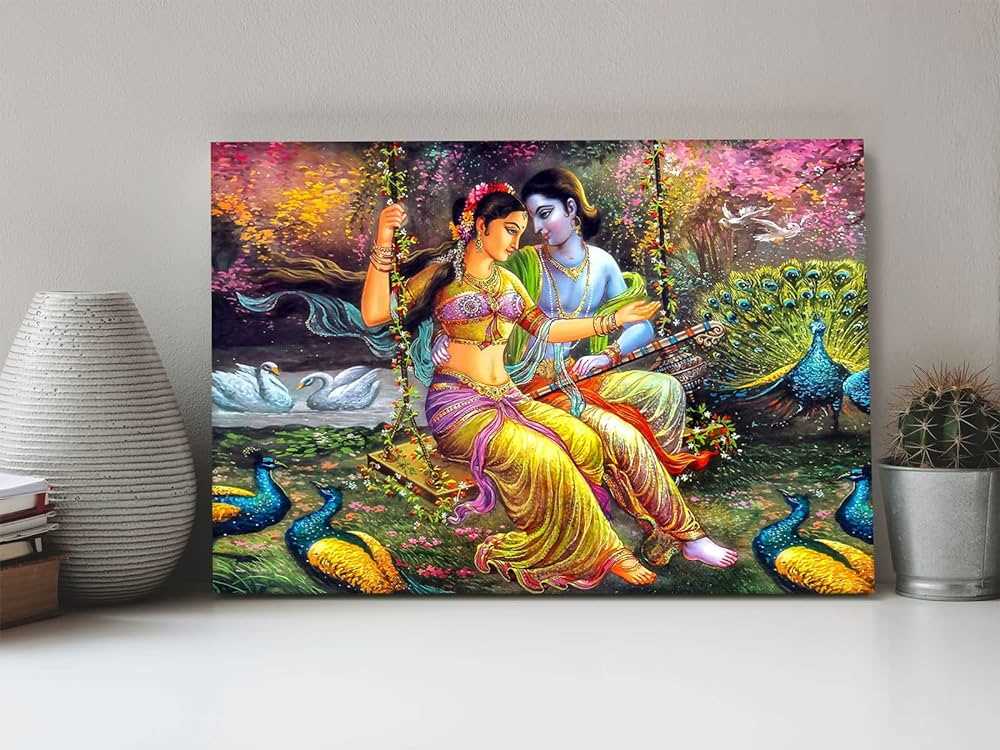
The beautiful art form of Radha Krishna murals captures the essence of spirituality and devotion. The intricately painted images depict the divine love between Radha and Krishna, and the profound spiritual connection they share.
Radha and Krishna are revered figures in Hindu mythology, seen as the epitome of love and devotion. The murals, with their vibrant colors and intricate details, serve as a visual representation of this spiritual union.
These murals often feature Radha and Krishna in various poses, such as dancing together or playing musical instruments. Each pose and gesture has a symbolic meaning, allowing viewers to engage with the spiritual message being conveyed.
The presence of these murals in temples and homes creates a sacred atmosphere, inviting devotees to contemplate the divine love and devotion depicted in the artwork. The act of viewing these murals can be a form of meditation, offering a moment of connection with the divine.
Radha Krishna murals also serve as a reminder of the importance of love and devotion in one’s spiritual journey. The love between Radha and Krishna is often seen as a metaphor for the love between the individual soul and the divine. By contemplating these murals, devotees are encouraged to cultivate love and devotion in their own lives.
Furthermore, these murals celebrate the beauty and joy of life, reminding viewers to embrace the divine presence in everyday experiences. The vibrant colors and lively depictions of Radha and Krishna convey a sense of celebration and happiness.
Overall, Radha Krishna murals serve as a powerful expression of spirituality. They embody the love, devotion, and joy that can be found in one’s spiritual journey. By engaging with these murals, individuals can tap into their own spiritual essence and deepen their connection with the divine.
Capturing the Divine Love of Radha and Krishna in Paintings
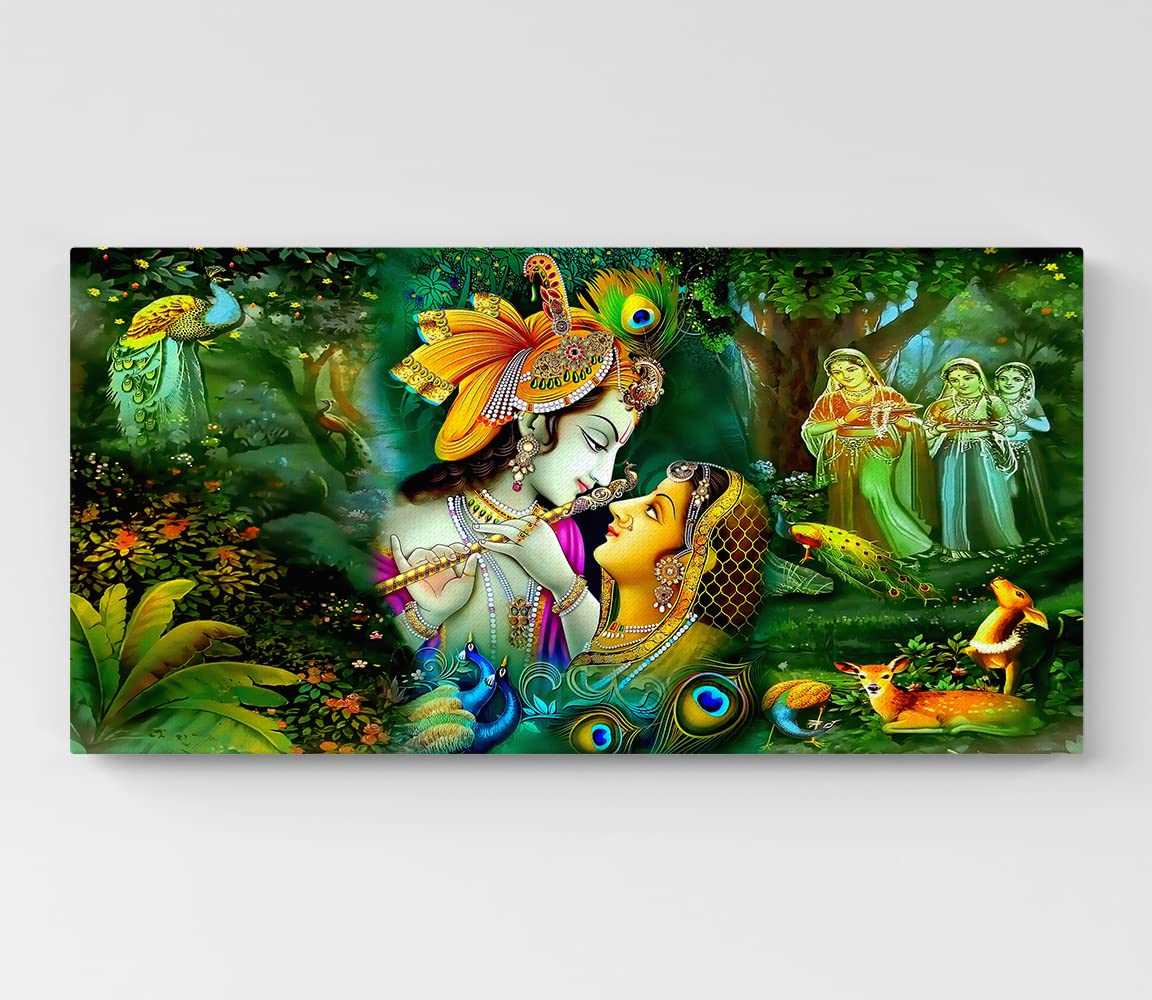
The love between Radha and Krishna is considered to be the epitome of devotion and spiritual love in Hindu mythology. Artists have long been fascinated by this divine love and have tried to capture its essence in their paintings. Radha Krishna mural art has become a symbol of devotion and is often found adorning temples and homes.
The paintings depict the divine couple engaged in various activities that portray their love and affection for each other. They are often shown in playful poses, dancing, or engaging in lighthearted banter. The colors used in these paintings are vibrant and symbolic, with red representing love and passion, blue symbolizing Krishna’s divinity, and yellow signifying Radha’s devotion.
One of the most noteworthy aspects of Radha Krishna mural art is the use of intricate details. The artists pay close attention to the expressions on Radha and Krishna’s faces, capturing the range of emotions they feel for each other. The playfulness, longing, and eternal love are all beautifully portrayed, creating a sense of awe and reverence in the viewers.
The paintings often depict the divine couple surrounded by nature, with lush green fields, blooming flowers, and serene rivers symbolizing the idyllic love they share. The artists also incorporate symbols and motifs from Hindu mythology, such as peacocks representing beauty and divine love. These elements enhance the overall aesthetic appeal of the paintings and add deeper meaning to the love story of Radha and Krishna.
| Symbolism | Meaning |
|---|---|
| Red color | Love and passion |
| Blue color | Krishna’s divinity |
| Yellow color | Radha’s devotion |
| Peacock | Beauty and divine love |
Radha Krishna mural art serves as a reminder of the divine love that exists beyond the realm of physicality. It inspires individuals to cultivate a deep sense of devotion and surrender to the divine. These paintings are not just decorative pieces but also spiritual symbols that awaken the feelings of love and devotion within the viewers.
In a world dominated by materialistic pursuits, Radha Krishna mural art provides a respite and reminds us of the greater purpose of life – to find spiritual connection and experience profound love. These paintings have the power to transport us to a realm of transcendent beauty and remind us of the eternal love between Radha and Krishna.
The Techniques and Styles of Radha Krishna Mural Art
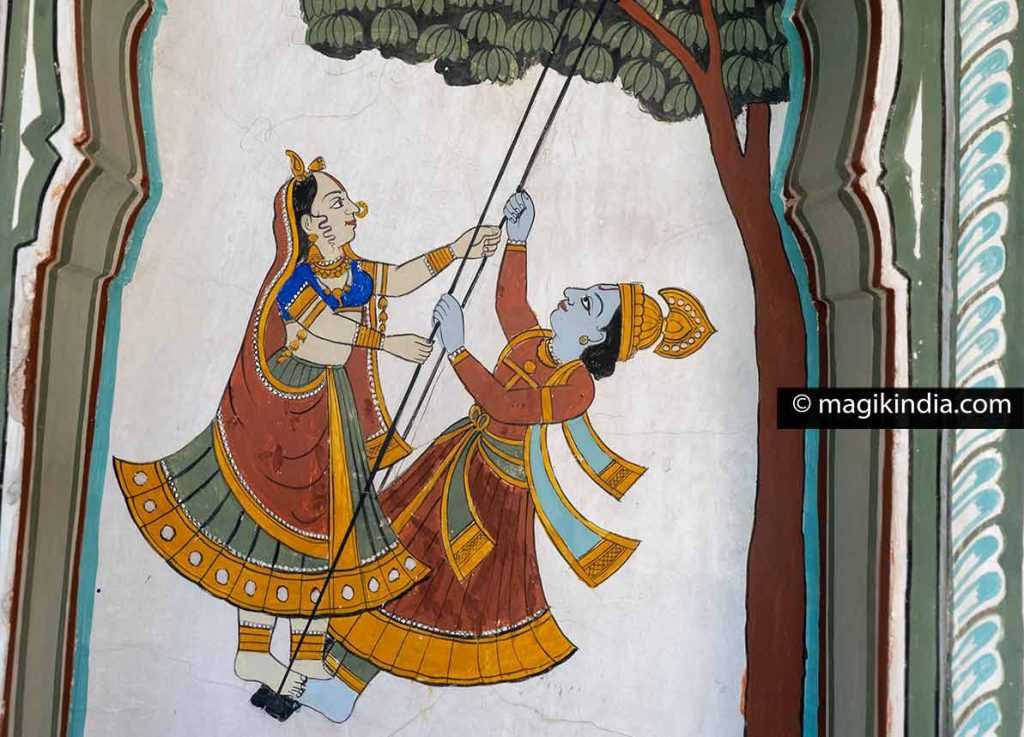
Radha Krishna mural art is a form of painting that depicts the divine love between Lord Krishna and Radha, his eternal beloved. This art form has been celebrated for centuries and continues to captivate audiences with its mesmerizing beauty and spiritual depth.
There are several techniques and styles that are commonly used in creating Radha Krishna mural art. These include:
- Fresco: This technique involves applying pigments onto wet plaster, allowing the colors to seep into the plaster and become a part of the wall itself. Fresco painting gives a unique texture and luminosity to the artwork, creating a vibrant and timeless effect.
- Mosaic: Mosaic is another popular technique used in Radha Krishna mural art. It involves the arrangement of small pieces of glass, stone, or other materials to create a larger image. Mosaic artworks can be incredibly intricate and detailed, showcasing the skill and precision of the artist.
- Stencil: Stencil art involves the use of pre-cut templates to create repeated patterns or motifs. This technique is often used in Radha Krishna mural art to achieve intricate designs and consistent details. Stencils allow artists to reproduce complex imagery with precision and efficiency.
- Brushwork: Brushwork is a fundamental technique in mural art, where brushes are used to apply paint directly onto the wall. This method allows for greater control and flexibility in creating various textures and details. Brushwork can range from bold and expressive strokes to delicate and subtle ones.
In terms of style, Radha Krishna mural art can vary depending on the region and artistic tradition. Some styles may emphasize realism, capturing the exact likeness of the divine couple, while others may focus on abstraction and symbolism, representing their spiritual love in a more conceptual manner.
Common stylistic elements seen in Radha Krishna mural art include intricate floral motifs, vibrant color palettes, and ornate borders. The use of gold leaf or metallic paints is also common, adding a touch of opulence and divine radiance to the artwork.
Overall, the techniques and styles used in Radha Krishna mural art demonstrate the incredible talent and creativity of the artists, as well as their devotion and reverence for the divine love between Radha and Krishna. These artworks not only serve as beautiful decorations but also as powerful symbols of devotion and spiritual love.
The Symbolism and Meaning Behind Radha Krishna Murals
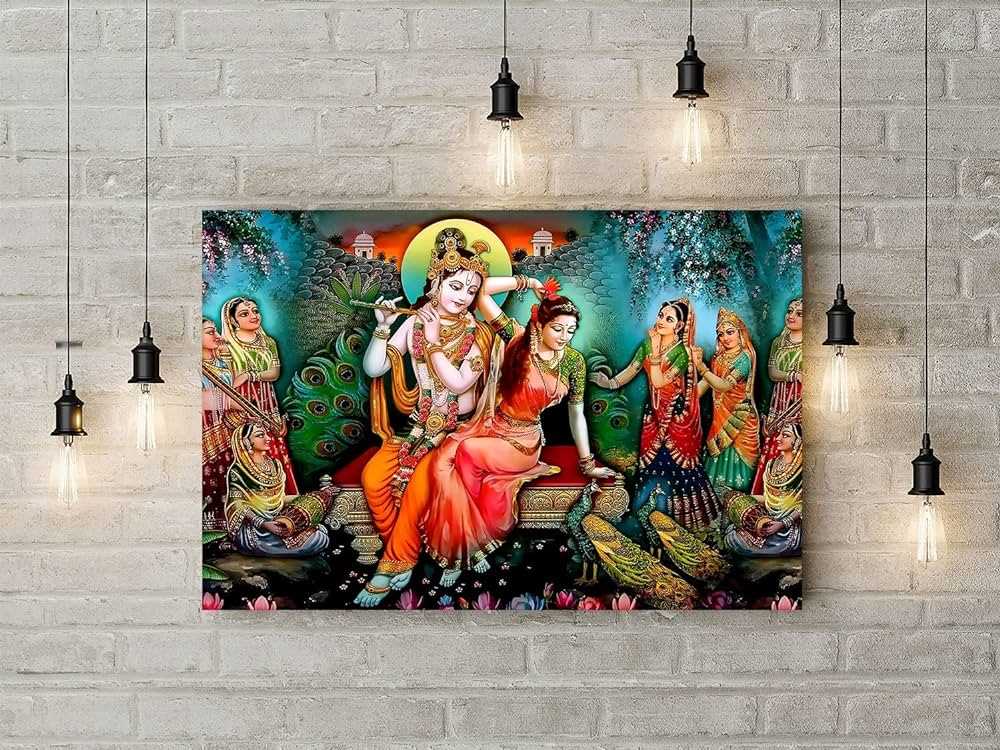
The art of Radha Krishna murals is not just a visual treat, but also holds deep symbolism and meaning. These beautiful paintings depict the divine love between Radha and Krishna, which goes beyond the realm of human understanding.
Radha represents the embodiment of pure devotion and unconditional love. She is often portrayed as a devoted and selfless devotee of Krishna. Her love for him is so profound that it becomes a symbol of the soul’s yearning to unite with the divine.
Krishna, on the other hand, is the supreme God who represents love, joy, and spiritual wisdom. He is depicted as the ultimate charmer, with his enchanting flute music and mischievous smile. His relationship with Radha symbolizes the eternal bond between the soul and the divine.
The murals often show Radha and Krishna in various postures and settings, each with its own symbolic meaning. One common pose is Radha standing beside Krishna, with her hand placed on his shoulder. This represents her complete surrender to him and her recognition of him as the ultimate source of love and happiness.
Another common depiction is Krishna playing the flute while Radha listens attentively. This symbolizes the divine music that captivates the soul and leads it on a mystical journey towards spiritual awakening.
The use of vibrant colors in the murals also holds significance. The colors used, such as shades of red, yellow, and blue, represent various emotions and aspects of divine love. Red represents passion and desire, yellow represents joy and happiness, and blue represents spirituality and transcendence.
Overall, Radha Krishna murals are not just beautiful works of art, but also powerful symbols of devotion and spiritual love. They remind us of the eternal bond between the soul and the divine, and inspire us to seek and experience that divine love within ourselves.
The Influence of Radha Krishna Mural Art in Modern Society
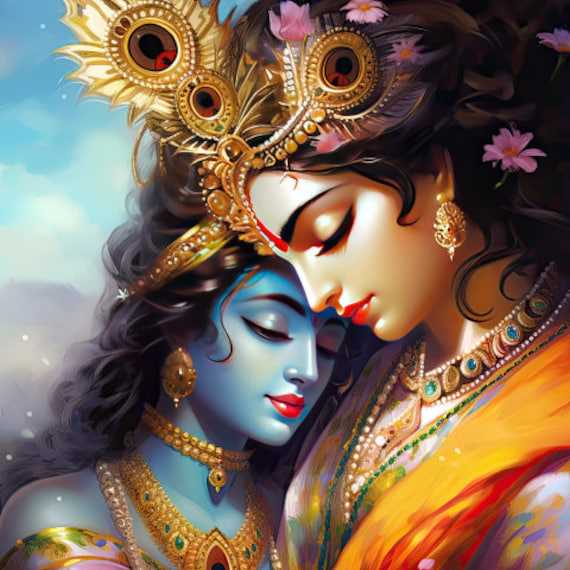
Radha Krishna mural art holds a significant influence in modern society, impacting individuals in various ways. The images of Radha and Krishna beautifully depicted on walls and public spaces evoke a sense of devotion, spirituality, and love, thus creating a transformative experience for those who encounter them.
One of the greatest impacts of Radha Krishna mural art is its ability to inspire and stimulate one’s spiritual journey. The divine love and bond between Radha and Krishna depicted in these murals serve as a reminder of the eternal connection between the soul and the Supreme Being. This symbolism resonates with individuals seeking a deeper understanding of their spiritual path, guiding them towards a state of inner peace and contentment.
Furthermore, Radha Krishna mural art also serves as a form of education and cultural preservation in modern society. The vibrant colors, intricate designs, and detailed storytelling in these artworks convey traditional tales and teachings of Hindu mythology. These murals not only showcase the rich cultural heritage of India but also educate individuals, both young and old, about the timeless wisdom and values embedded in these stories.
In addition to its cultural and spiritual significance, Radha Krishna mural art has also become a symbol of unity and inclusivity in modern society. These murals can be found in various public spaces, transcending religious boundaries and fostering a sense of communal harmony. People from different faiths and backgrounds can appreciate and connect with the beauty and symbolism of Radha Krishna mural art, promoting understanding and respect among diverse communities.

I am a mural enthusiast and a fervent admirer of street art. Rather than creating murals myself, I am passionate about collecting them. My love for street art knows no bounds. I am dedicated to curating and cherishing these artworks that grace the streets. My collection stands as a testament to my profound appreciation for this form of artistic expression.
read about me



